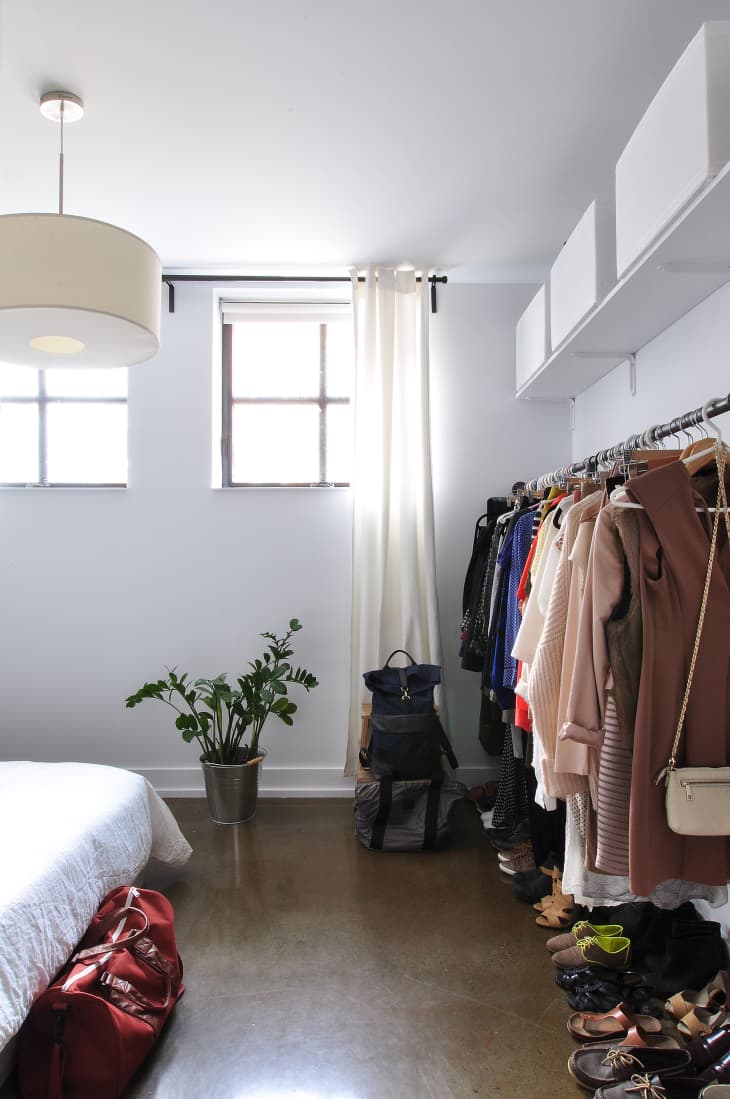Thinking Small: A Capsule Wardrobe for Decor
Recently,Eleanor wrote a great three-piece series on capsule wardrobes, and I have several other friends who swear by them. I love the idea of paring down my closet and working within a limited set of beloved options, but it also got me thinking—how can I translate the concept to my decor?
What:
In case you aren’t familiar with the concept, a capsule wardrobe is a limited collection of clothing that you use for a set period of time. Instead of selecting your clothes from the full array of the items you own, you might restrict yourself to 10 shirts, 2 skirts, and 5 pairs of pants for a period of 3 months. The basic idea is that by limiting the amount of items that you have, you will actually have more money, more time, and a more cohesive style.
How:
When it comes to decor, the capsule wardrobe idea works really well for accessories and small decorative items. (Obviously, you won’t swap out your sofa every three months.) Eleanor explainedhow she created her capsule, and the tenets work much the same for capsule decor.
You’ll want to have a certain number of pieces, divided across several main categories. A wardrobe might look like this: 9 pairs of shoes, 9 bottoms, 15 tops, 2 dresses, and 2 jackets. A home “wardrobe” might look like this: 9 decorative tchotchkes, 15 art books, 2 scented candles, and 2 decorative pillows. The number of items and the distribution is up to you, but I would suggest coming up with a figure that forces you to significantly reduce the number of items you’re using in your home. If you like a minimalist look, you might limit yourself to 10 total, but if you prefer something more maximalist, then 30 might work for you. A good rule of thumb to start with is to reduce your total items by 50%.
你可能想要为每个房间有一个小胶囊, but I would actually suggest creating a capsule to use across your whole house. Pillow covers that you usually relegate to the living room might take on fresh life in a guest bedroom. Or a vase that you usually have on the dining room table might be just the thing you need on your bathroom shelf.
Like Eleanor did with her wardrobe, consider splitting the year into four sections, and refreshing your home’s wardrobe in winter (January-March), spring (April-June), summer (July-September), and fall (October-December).
Why:
There are several reasons to try this exercise, even if it carries you far from your decorating norm. (Or, perhaps, it’s worthwhile precisely because it does!) For one, it will teach you the power of editing. As you remove items from your space, you will start to see it in a different light. Areas that were once filled will now have room to breathe, and you may realize that they would be better utilized in a different way altogether.
If you’re like me, I tend to keep all my objects on display at all times. By keeping some in reserve for a later date, they become exciting and fresh again when you pull them from storage. Capsule decor has the dual advantage of allowing you to connect in new ways to the objects that you’ve selected (you have to actively choose them and pay more attention to how you use them) and of letting you reconnect, over time, with the other objects that you’ve kept in reserve.
Capsule decor could also help you pare down what you own. Eleanor wrote, “I’ve found that the real joy of capsules lies in how they make subtracting from and adding to our wardrobes simpler. Choosing not to add something to a capsule, especially if you make that choice several seasons in a row, is a good hint that it’s time to let the piece go.” The same works for decor. When I look in my closet and see decorative pillowcases that I haven’t used in a year, I think, “But I may decide I want to use them again sometime!” Having a capsule, where I actively choose not to include them, could finally convince me that those pillowcases are never going to make the cut.
Capsule decor also requires attention to cohesion. You have to select objects that work well together, which means recognizing the patterns, colors, and shapes of your belongings in ways that you might have previously overlooked. Limiting your options helps you see new connections between items, and it also might teach you more about your style. You might notice that you’re drawn to cooler tones, or that in summer months you crave reds and pinks.
Finally, capsule decor is a handy tool if you’re looking to save some money. By having a reserve bank of items, it’s possible to “shop” your own closet when you feel that your home is getting stale. In Eleanor’s words, “You haven’t seen that stuff in months, so it could seem so new and exciting that you don’t need spend much money to refresh your style.” She also wisely suggests that, if you notice that you are lacking something, make a note of it instead of rushing out to purchase it. With time, you may realize that you don’t need it as much as you thought.
All in all, even if you decide that a capsule lifestyle isn’t for you, a three-month dalliance with the concept might help you pay more attention to your style, decor habits, and bank balance.

